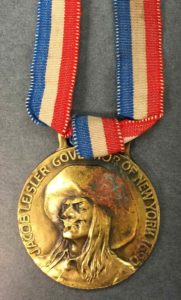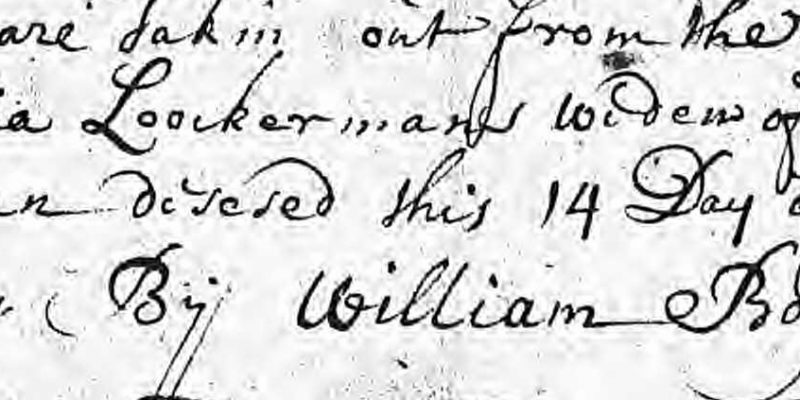Who Was Jacob Leisler?
Best known as a leader of a 1689 New York rebellion bears his name, Jacob Leisler was a prominent merchant, land developer, and exponent of Reformed religious fundamentalism and Orangist political ideology. He was intimately bound to the social, economic, and political development of New Netherland and New York for three decades, from his arrival in 1660 as a soldier for the Dutch West India Company until his execution for treason in 1691.
Early Life
Jacob Leisler was born in Frankfurt-am-Main to a prominent Calvinist family that included grandfather Dr. Jacob Leisler (chief councilor to the Counts of Oettingen), father Reverend Jacob Victorian Leisler (pastor of the Frankfurt-am-Main French Reformed church), and noted Huguenot theologian Simon Goulart. His brothers Johann Adam and Frantz were bankers who financed the Duchy of Württemberg and other Protestant states. As a member of the Calvinist elite, Leisler liaised with several political and intellectual figures of his day, including Dutch artist Henri Couturier, New England divines Cotton and Increase Mather, and Orangist British exiles in Rotterdam such as Gilbert Burnet, Earl of Shrewsbury Charles Talbot, and Earl of Monmouth Charles Mordaunt.
Leisler’s Rebellion
Leisler catapulted to fame in 1689 when he assumed the role of King William III’s governor of New York in the wake of Britain’s Glorious Revolution. He thereupon implemented a government based on direct popular representation that had wide impact from the Chesapeake to New England. The following year he initiated and hosted British America’s first intercolonial congress and organized the first intercolonial military action independent of British authority. Leisler’s administration of New York split the province into two distinct camps aligned with the Regent and Orangist factions in the United Provinces and the Whig and Tory factions in Britain. According to some historians, the legacy of this split is America’s unique two-party system. Other historians view Leisler’s Rebellion as a forerunner of the American Revolution.

Remembering Jacob Leisler
For a number of reasons, modern-day American scholars have neglected Jacob Leisler. Much of his correspondence is in Dutch, French, or German. The anti-German hysteria of World War I also discouraged study of the German-born Leisler. Furthermore, his papers are strewn throughout New York, Connecticut, Maryland, Massachusetts, and Virginia, as well as Germany, Holland, France, England, and the West Indies.
The modern neglect of Leisler can also partially be attributed to the political designs and struggles of eighteenth-century New Yorkers. For decades following his execution in 1691, Leisler’s government and reforms remained a major source of factionalism within New York politics. Leislerians struggled to preserve Leisler’s legacy while anti-Leislerians attempted to eradicate his memory and strike his name from the public record. In addition, the broad notoriety Leisler enjoyed in the eighteenth and nineteenth centuries resulted in a strong collector’s market that further scattered his manuscripts. For each of these reasons, the Jacob Leisler Papers Project is required to search well beyond the government offices and local archives that would logically hold the papers of an important New York figure.
The only major published collections of Leisler’s papers appeared in 1849, when approximately 400 Leisler documents for the years 1689-1691 in the possession of the New York State Archives were printed in Volume II of the Documentary History of New-York. Compiled prior to the imposition of scholarly standards, the Documentary History of New York collection, lacking annotation, chronologically out of order, and poorly transcribed, nonetheless served as the basis for subsequent studies of both Jacob Leisler and late seventeenth-century New York. Peter R. Christoph published an excellent revised scholarly edition of this collection, The Leisler Papers 1689-1691: Files of the Provincial Secretary of New York Relating to the Administration of Lieutenant-Governor Jacob Leisler, in 2001. Another collection of Leisler material, consisting largely of documents for the months February-March 1691, were published in Volume I of the New-York Historical Society Collections in 1868.
Other than the Documentary History of New York and New-York Historical Society Collections, British-speaking students of late-seventeenth-century Dutch-speaking America have previously had available only the published papers of such British imperial officials as William Blathwayt, Edward Randolph, and Sir Edmund Andros, and the letters of such New Englanders as Samuel Sewall, and the Increase and Cotton Mather collections, which make only passing reference to events in the former Dutch colony of New Netherland. As a result, there is a large gap in the knowledge of events in New York between the 1664 conquest of New Netherland by the British and the early eighteenth century.
Calendar to Leisler Papers
Calendars of documents are descriptive lists documents arranged in chronological order. The Jacob Leisler…

